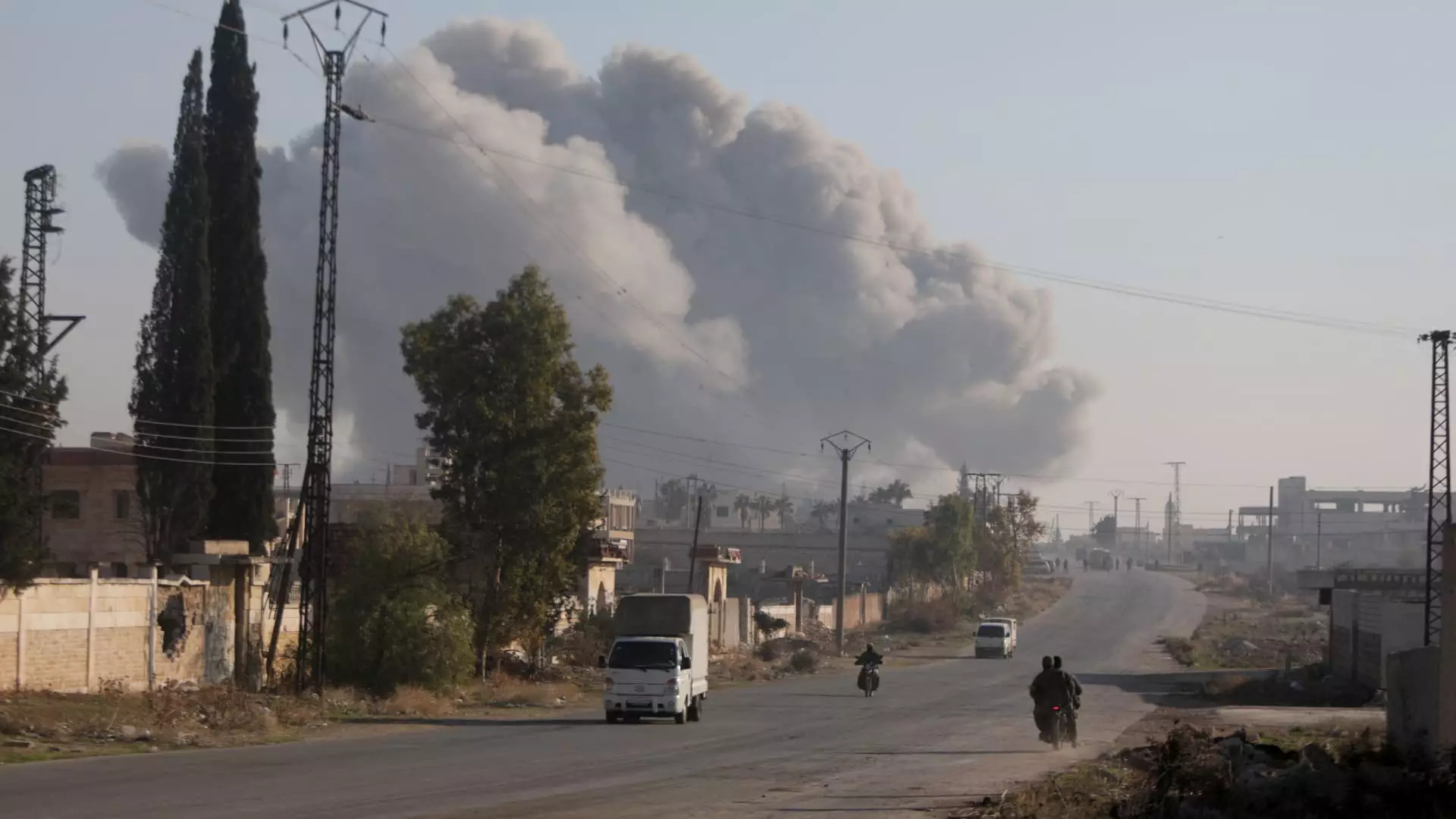On Friday, the situation in Aleppo, Syria, turned chaotic as insurgent groups initiated a significant offensive against government forces, marking the first serious clash in the city since 2016. This unexpected surge of violence not only sent shockwaves through the local populace but also cast doubt on the stability of the region, which is grappling with multiple ongoing conflicts. Residents, alarmed by the sound of gunfire and the threat of missile strikes, began fleeing their homes, creating a scene of panic reminiscent of earlier phases of the brutal civil war that has persisted in Syria since 2011.
The Syrian Observatory for Human Rights reported a high toll, with numerous casualties on both sides, as insurgents, primarily led by the militant group Hayat Tahrir al-Sham (HTS), made notable territorial gains in the northwestern countryside. The sudden intensity of this offensive aligns with calls from insurgent leaders urging government troops to surrender, suggesting a strategic and psychological component to their approach. Robert Ford, the last U.S. ambassador to Syria, remarked that this incident illustrates the fragility and apparent weakness of Syrian government forces, hinting at a broader trend of military decline.
A Region in Tumult
Aleppo’s latest unrest is occurring within a larger context of regional strife, notably against the backdrop of simultaneous conflicts involving Israel, Hezbollah, and other armed factions in Gaza and Lebanon. Such dynamics render the situation in Syria even more precarious. Notably absent from asserting dominance were Iranian- and Hezbollah-aligned forces that had previously supported the Assad regime. Their current preoccupation with ongoing hostilities has left a strategic vacuum in the region, one that insurgents have swiftly exploited.
Furthermore, experts have pointed to a unique confluence of factors behind the insurgents’ rapid advance. The distraction of key players like Russia, whose focus appears divided due to the ongoing war in Ukraine, coupled with the pressures on Iranian resources, underscores an opportunity that the opposition forces were poised to capitalize on. Dareen Khalifa, a senior adviser with the International Crisis Group, confirmed these dynamics, emphasizing how the regime’s lack of military cohesion and rapid crumbling serve to embolden insurgent movements.
The implications of this resurgence in violence extend far beyond Aleppo’s boundaries. The conflict has drawn in various international actors, each maneuvering for influence. Turkey, which has been a longstanding supporter of the Syrian opposition, observed the initial phases of this offensive with growing concern, especially as it may destabilize a fragile balance established under previous ceasefire agreements. Turkish officials noted that this operation was intended to reclaim areas deemed to be critical in maintaining a de-escalation zone, yet events have escalated rapidly, straining previous diplomatic attempts.
In parallel, the United States has maintained a separate focus in Syria, providing support to Kurdish forces engaged in the fight against ISIS. The current escalation presents a broader question regarding the effectiveness of foreign intervention and the prospects for a peaceful resolution in a country ravaged by years of violent conflict.
As fighting continues, the immediate effects are dire. The Syrian government has publicly condemned the insurgents’ actions as a breach of national sovereignty, pledging to respond decisively. Yet, their assertions of control and ability to repel the insurgent forces contradict the realities observed on the ground. The emergence of drone warfare, previously an exclusive domain of stronger militaries, is now being utilized by insurgents, signaling a shift in tactics that could redefine the battlefield landscape.
Damage to civilian infrastructure reported, including attacks on university accommodations, further compounds the humanitarian crisis faced by countless civilians caught in the crossfire. As insurgents continue to execute high-profile attacks, the very fabric of Aleppo is threatened, reopening wounds from past conflicts while simultaneously highlighting the uncertainty of the future.
The recent incursions into Aleppo represent more than just another chapter in a prolonged civil war; they reveal the complex interplay of local fighters, regional powers, and international interests. The outcome of this confrontation could redefine the trajectory of the conflict, impacting strategies for resistance and governance that have developed over more than a decade of intense violence. Awaiting the unfolding developments, analysts and observers alike remain vigilant in a climate steeped in unpredictability.



Leave a Reply